B & M Theocharakis Foundation for the Visual Arts and Music
March 16- May 26, 2023
Curated by Natasha Christia

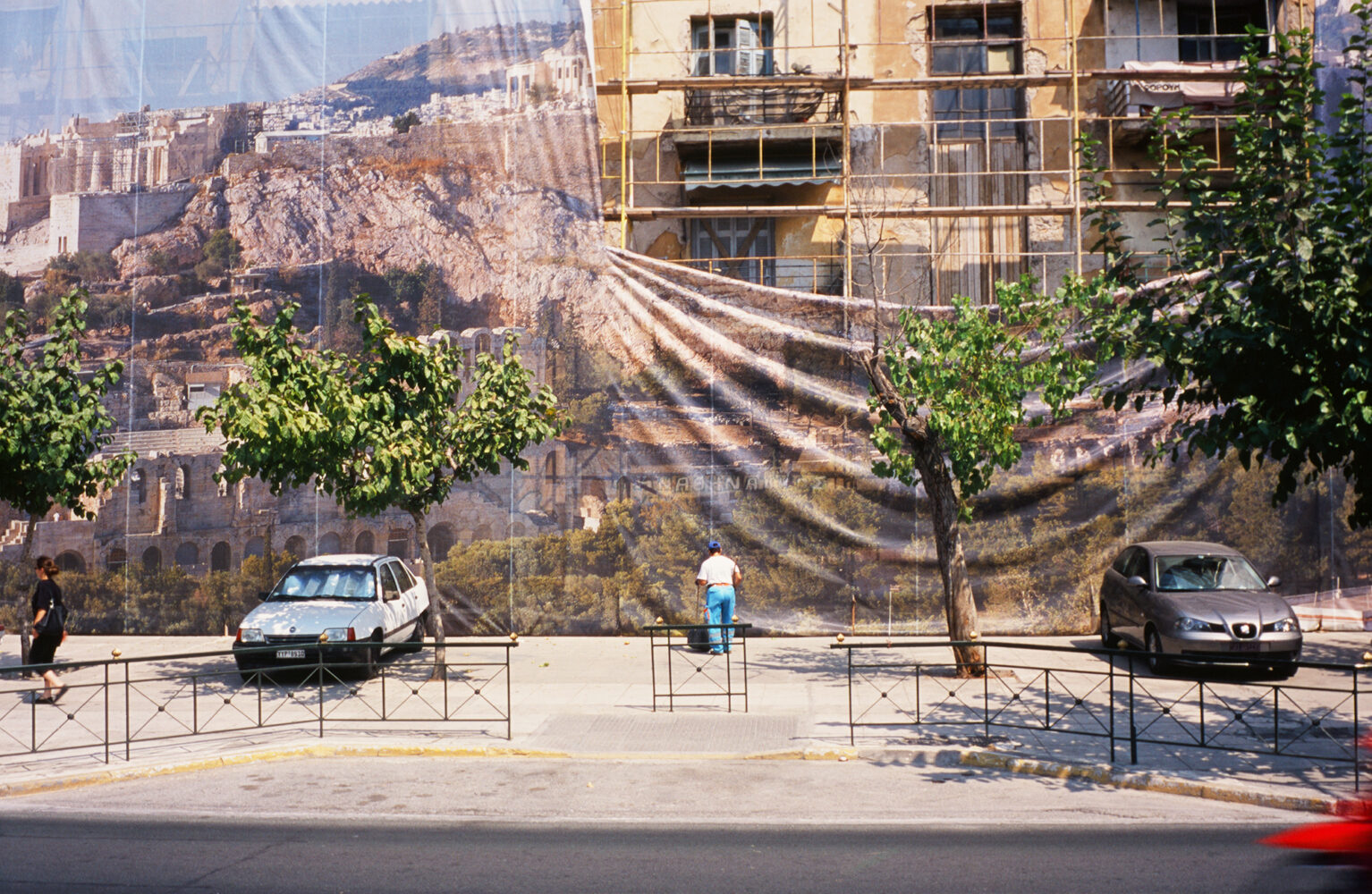
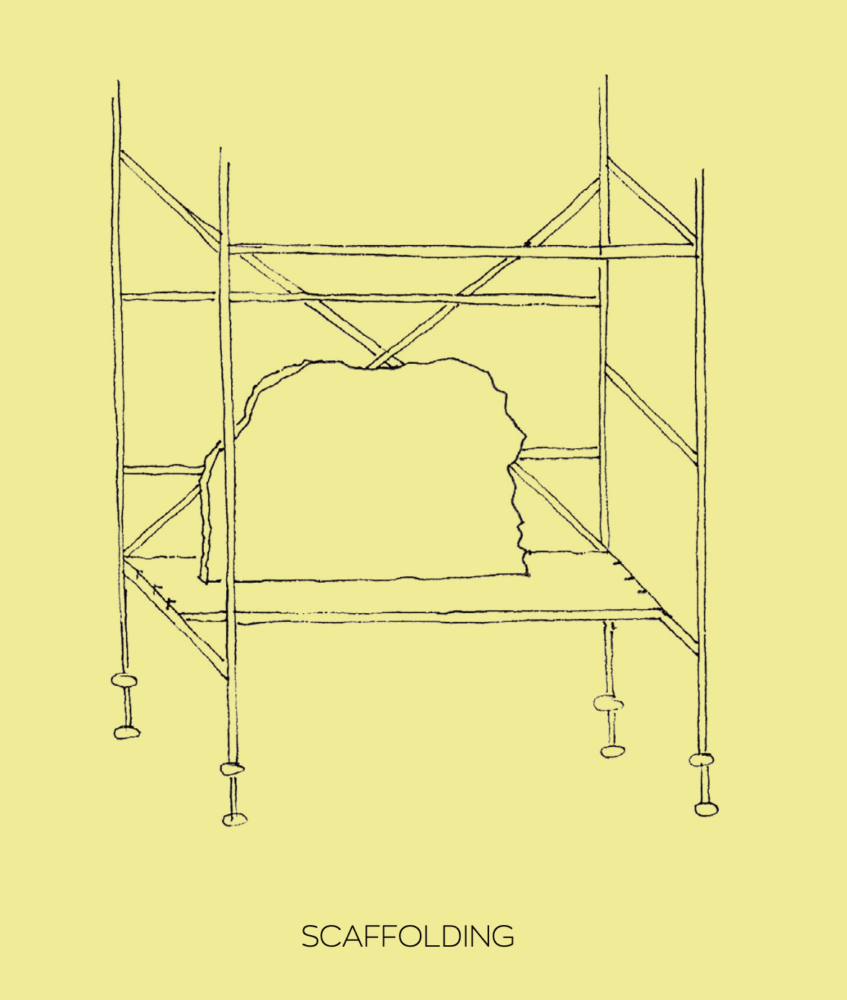
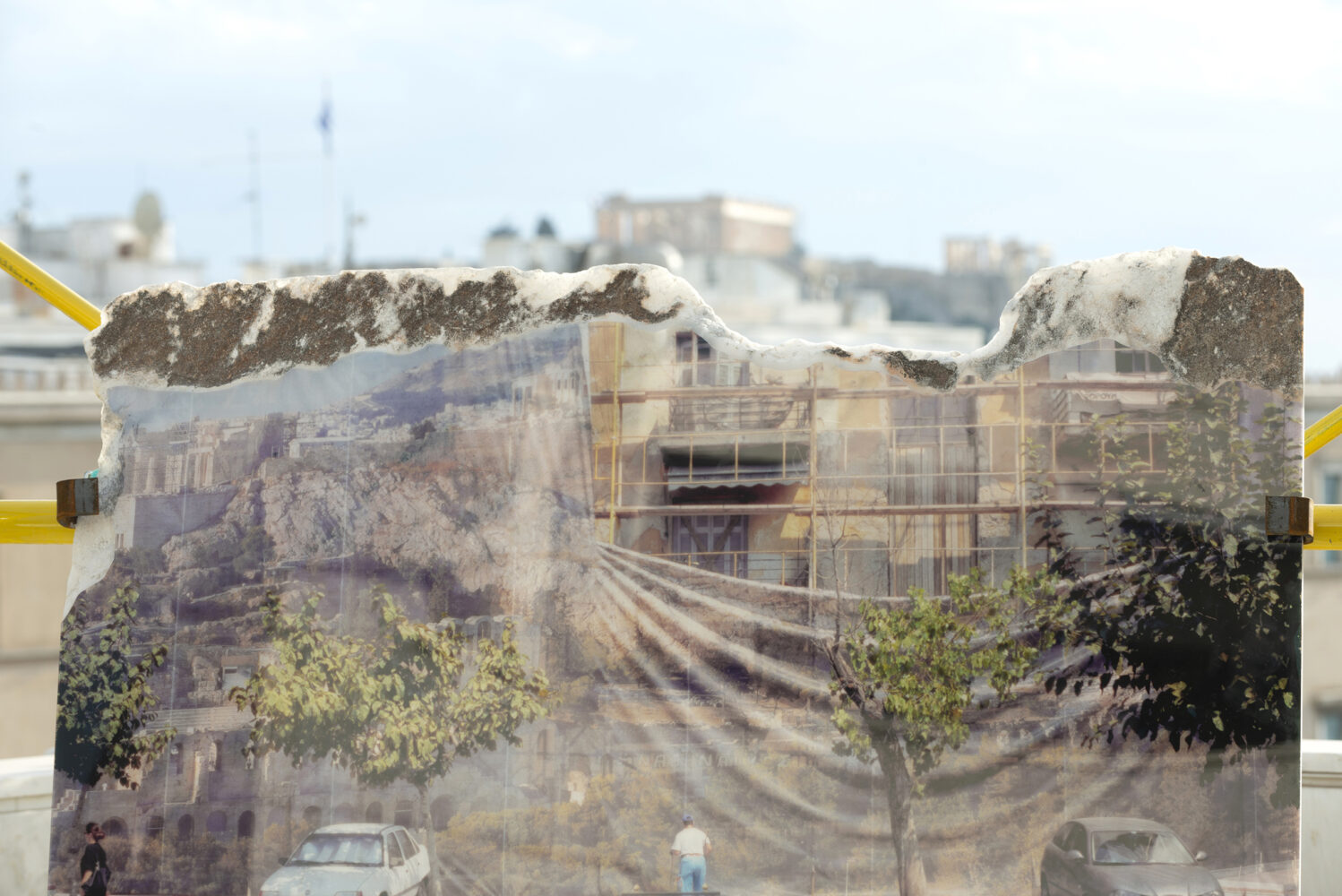
In 2023, I collaborated with Georges Salameh in Scaffolding, an open-air installation at the Theocharakis Foundation in Athens. Formalized as an ephemeral monument with the Acropolis in the background, Scaffolding was envisioned as a virtual and symbolic recollection of recurring patterns in the Lebanese-Greek artist’s personal history: the uprooting from Asia Minor his ancestors endured during the Greco-Turkish War (1919–1922); and, later, of his own family from Beirut to Athens, in 1989, toward the end of the Lebanese Civil War.
A natural slab of Pentelikon marble sat on the scaffolding structure, with a color photograph embedded on its surface. Entitled Sweeper, the photograph was taken by the artist during the 2004 Athens Summer Olympics on a central avenue of the city. The photograph captured a landmark interwar housing block for refugees from Minor Asia, temporarily sheathed in a facade wrap depicting a view of the Sacred Rock of the Acropolis—a last-minute embellishment strategy to keep the crumbling building hidden from the public eye.
Conceived as an archaeological artifact rising from the depths of the earth and on the verge of its future musealization—and further insertion in the national myth—the exhibited artwork aimed to trigger connections with elements of the urban landscape framing it: among them, the Hellenic Parliament, the Parthenon, and the Attican mountain range of Hymettus, on whose densely inhabited slopes thousands of refugees were re-sheltered following the 1923 population exchange between Greece and Turkey under the Treaty of Lausanne.
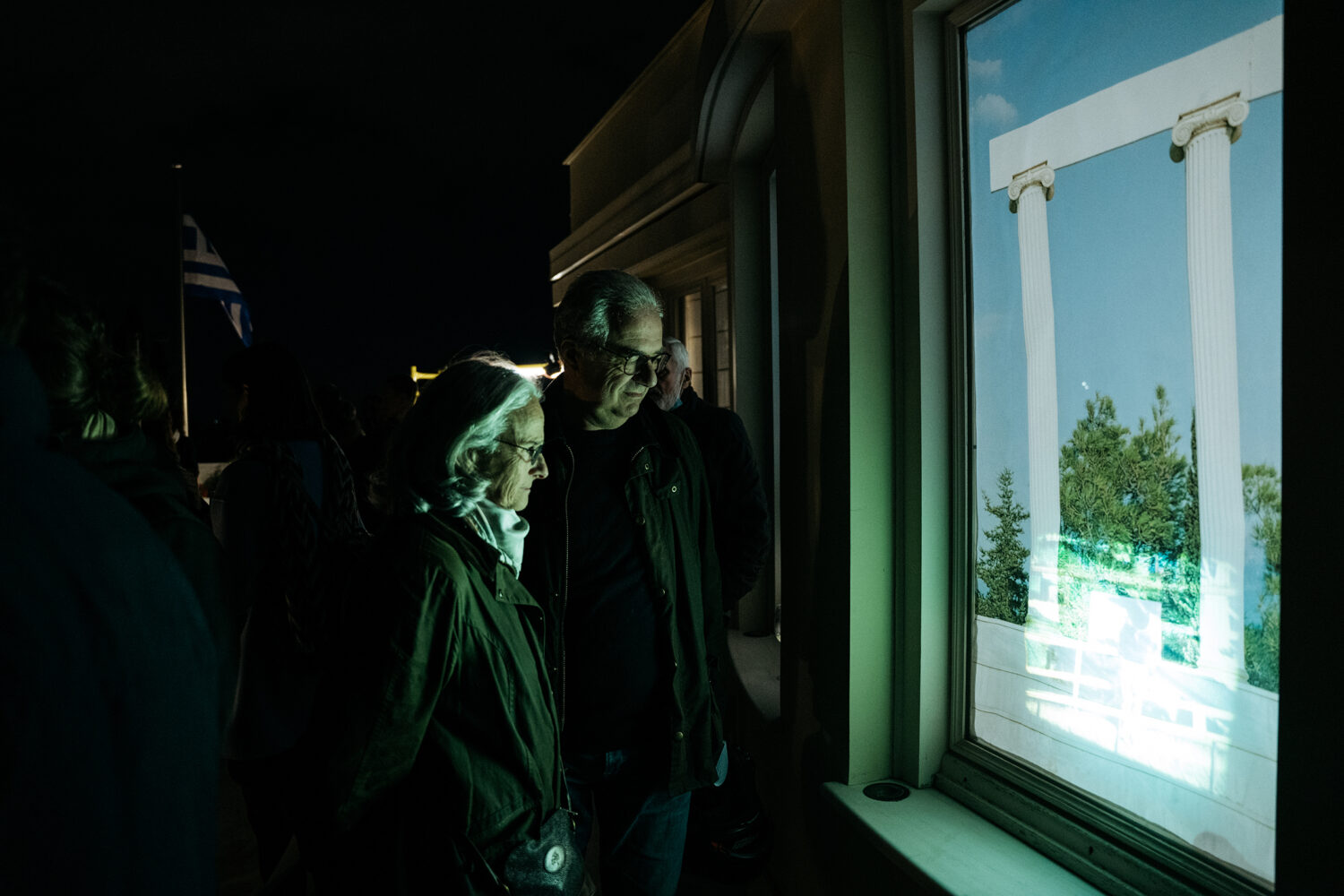
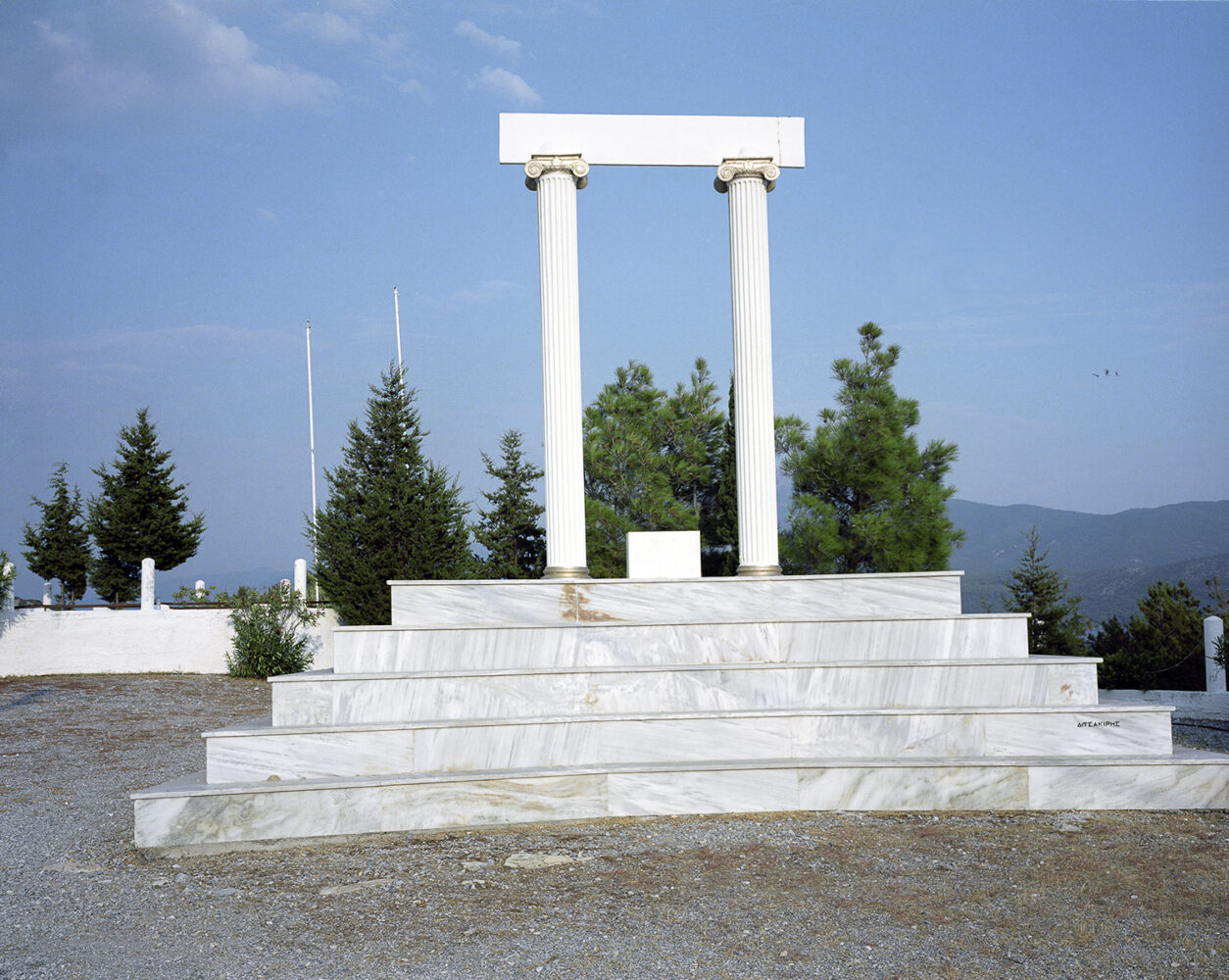
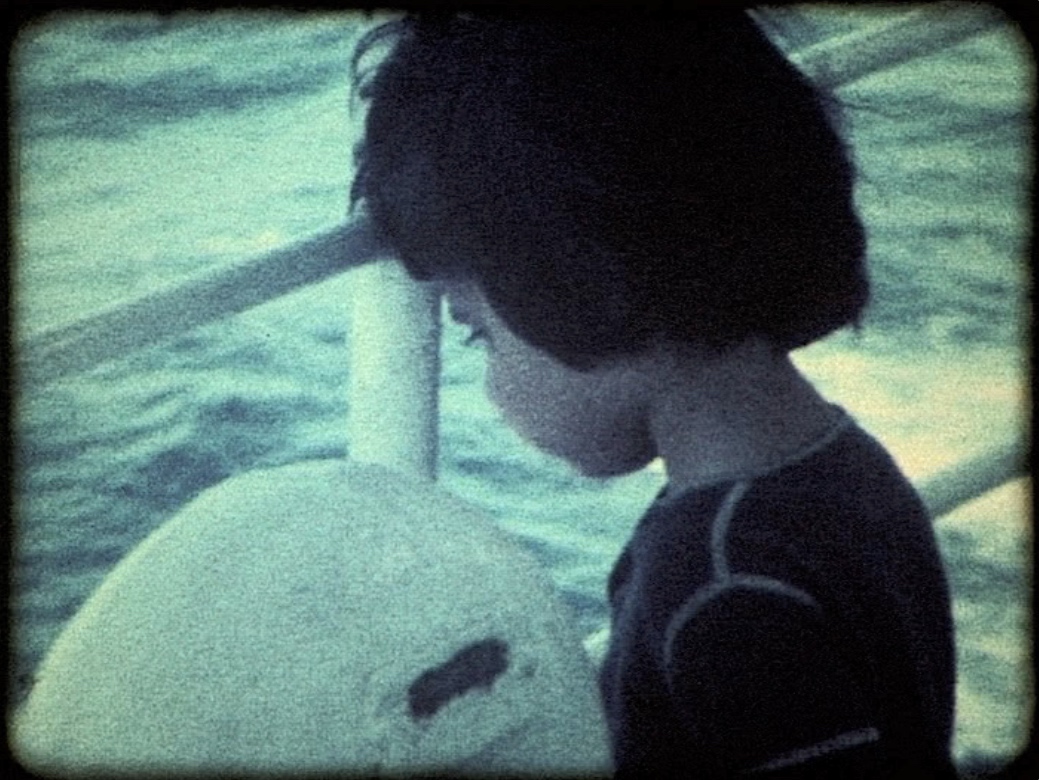
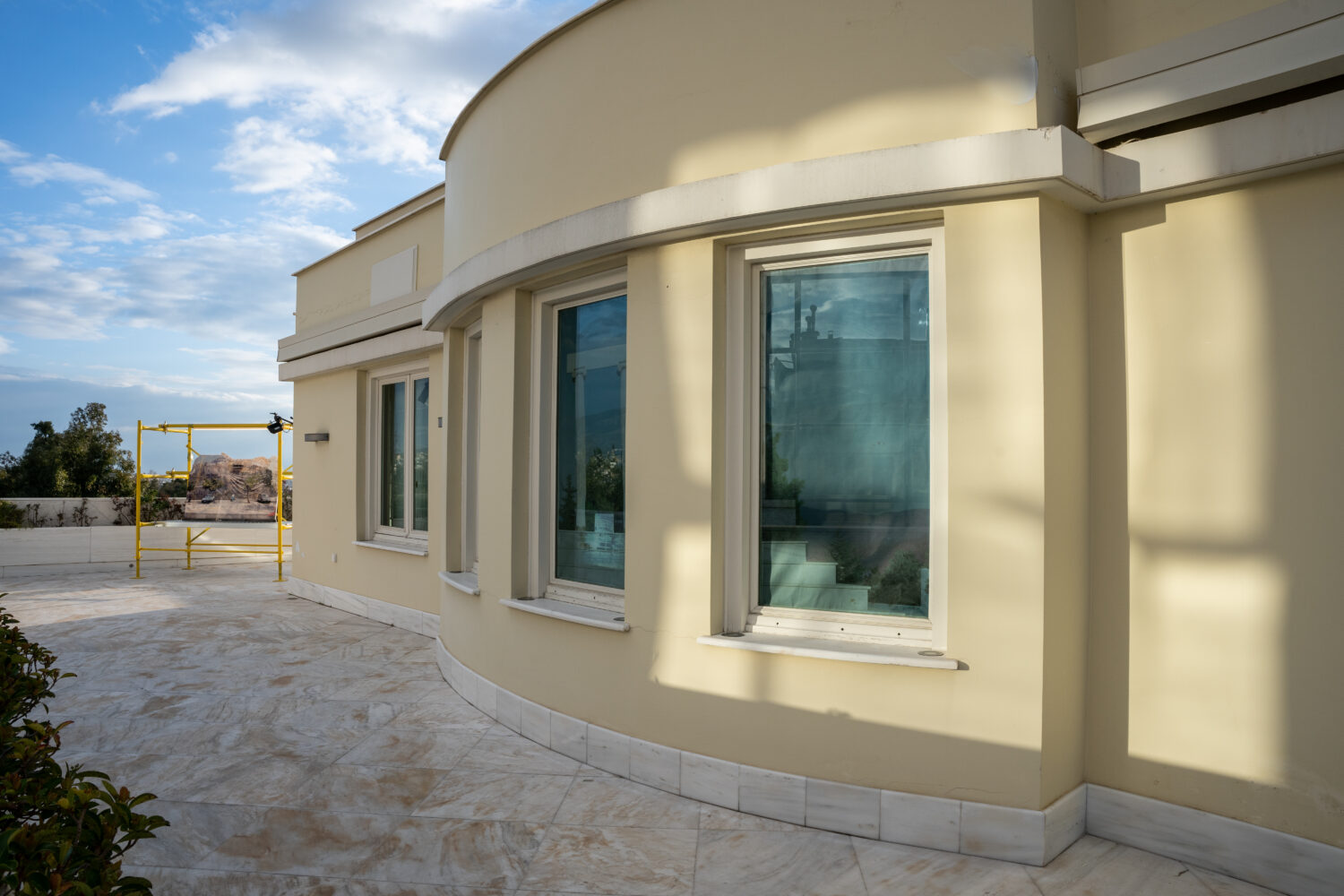

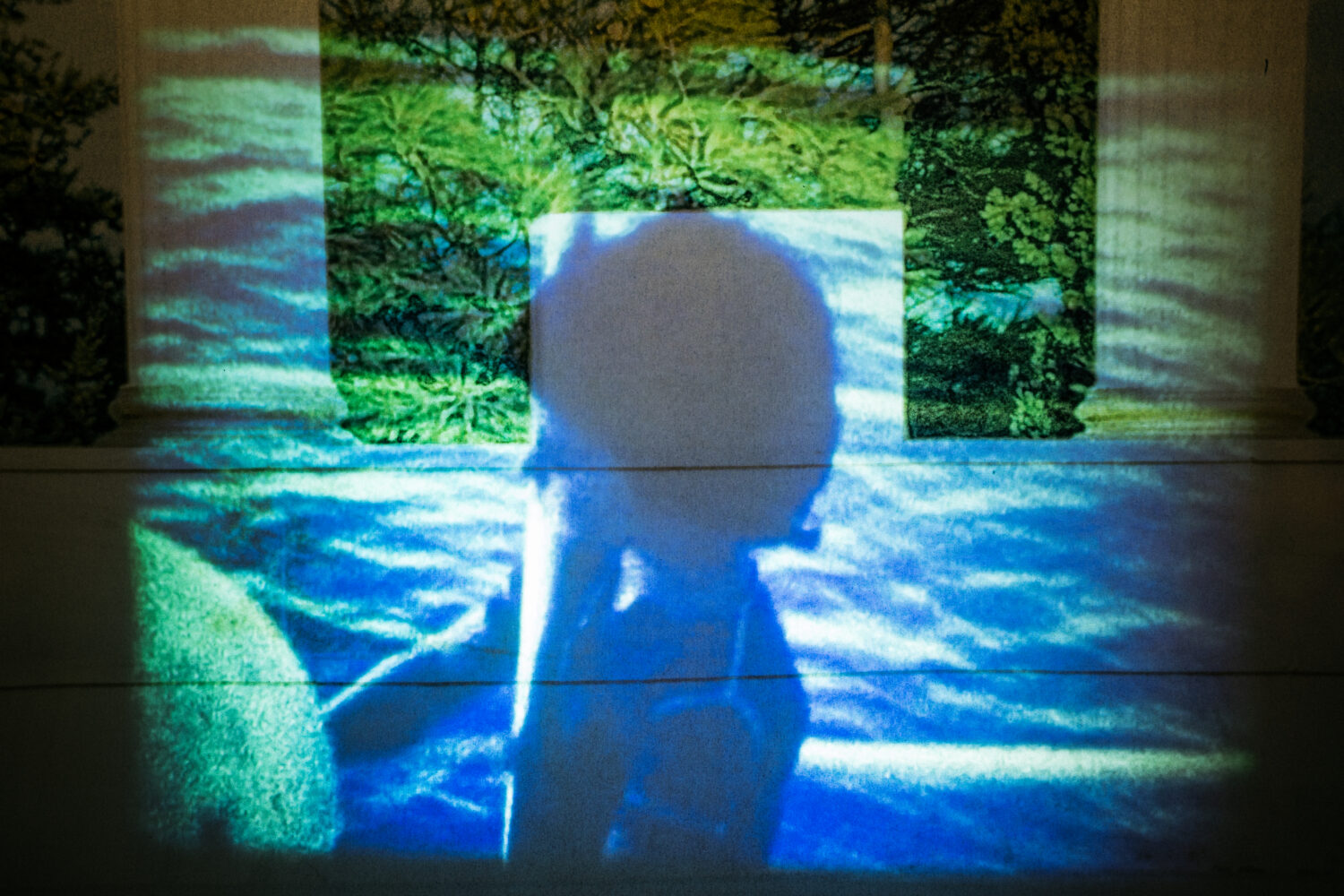
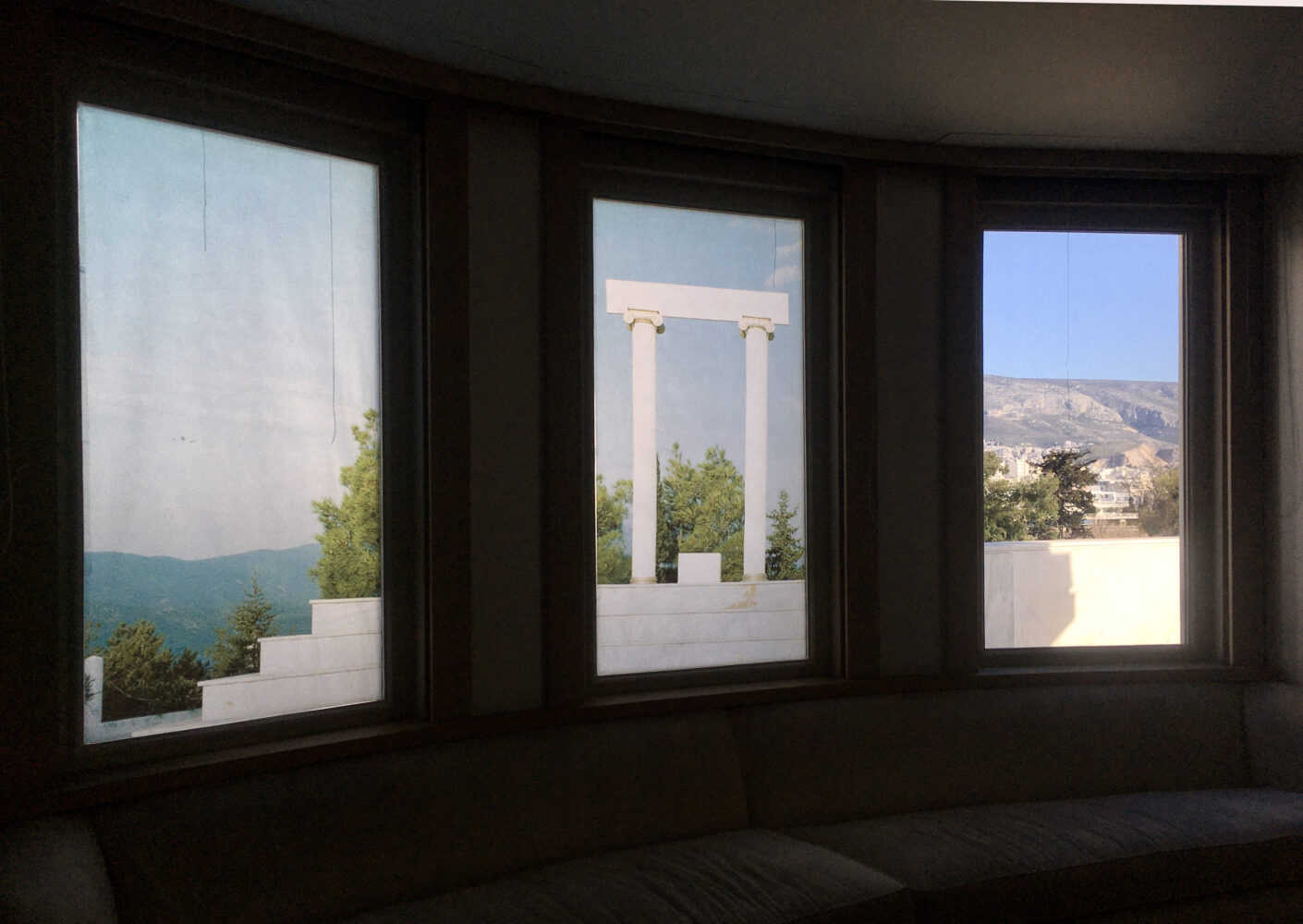
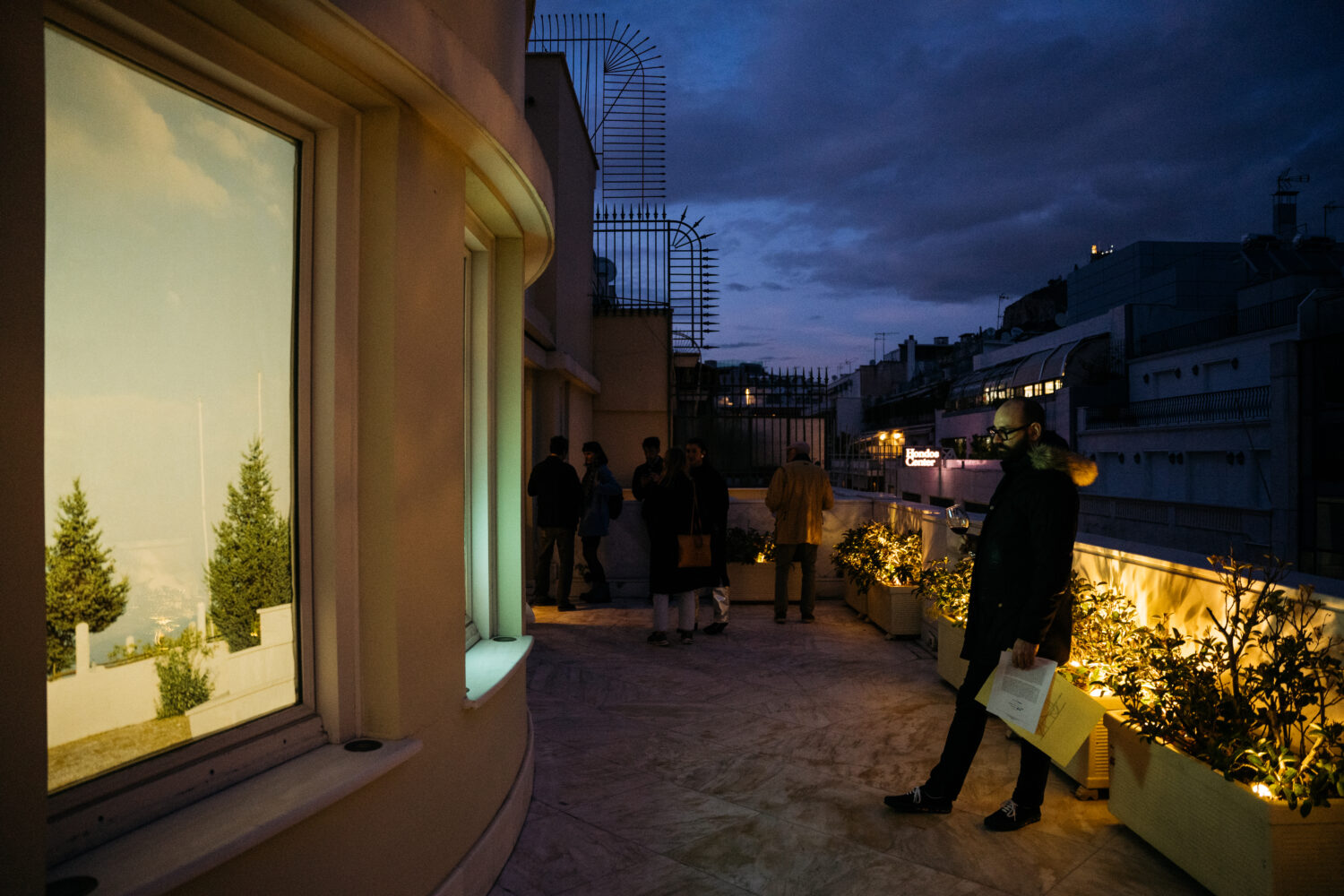
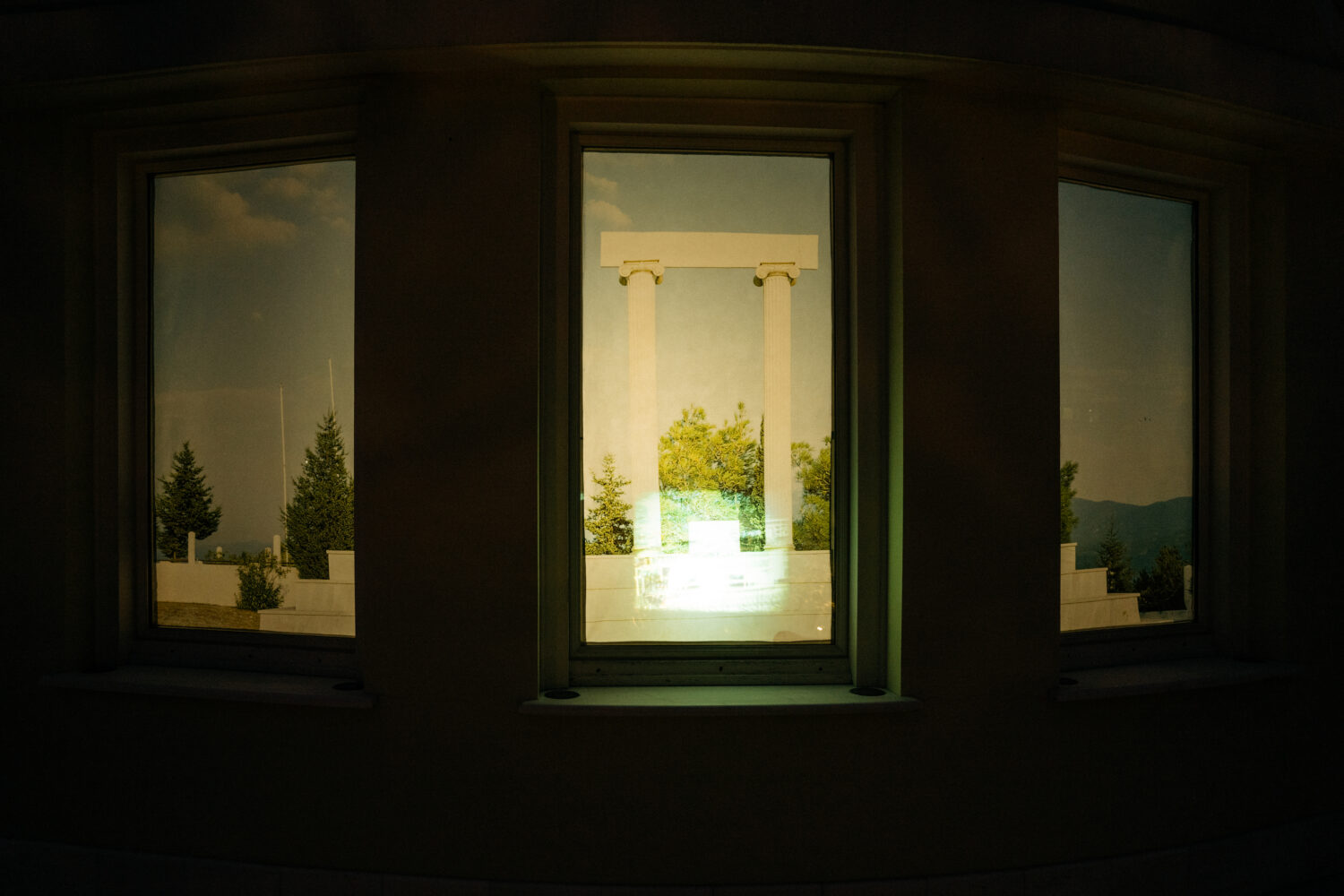
The piece established a dialogue with an artwork comprising the colour photograph Gate (2019) and the archival short film White Middle Sea (2010). Gate depicts the Asia Minor Refugee Memorial in Samos, constructed of Ionic columns with inscriptions of the names of cities in Asia Minor. The memorial was conceived as a monumental gateway to the future, awaiting a new beginning, or a potential disillusionment – an invocation to all refugees across the Mediterranean Sea. Based on Super 8 footage shot by the artist’s father, White Middle Sea documents Salameh’s earliest journey by boat from Beirut to Athens via Larnaca in 1976, shortly after the outbreak of the civil war. At first glance, the footage evokes the artist’s childhood, when in fact it had just been, irrevocably taken from him. “I no longer have a real memory of that period. My childhood has become for me a sort of landscape”, writes the artist, only to add, “After all, aren’t we a landscape of all we have seen?”.
The monumental fragments of collective memory in these two artworks are here complemented by a personal account, which, rather than reinforcing an anti-memorial space, attempts to nvestigate, re-signify and eventually reconcile itself with the way in which memory and – its odd but indispensable bedfellow – oblivion –, are engendered.
The monument and oral histories around it
Scaffolding invited the audience to a series of empathy exercises concerning mnemonic operations of trauma sedimentation and emersion.
A fold-out was given to visitors, presenting a chronology of 20th-century landmark events in Greco-Lebanese history. This timeline was “contaminated” with entries from the artist’s own family history, interlacing the supposedly objective nuances of hegemonic historical narrative with the individual, subjectively inflected threads of minor narratives.
Besides this, a program of public events unfolded, including two encounters around the “monument”, a workshops, a series of screenings and a performance. By appropriating and reframing memory and oblivion ingrained in his family genealogy, – the artist assumed the role of n archaeologist/custodian, and, ultimately, a mediator. Drawing upon the practice of oral-storytelling tthat impregnates his work as well as his cultural background, he set to unearth and share with the audience experiential fragments and emotions involving uprooting and its aftermath. The outcome was a series of encounters aimed at fostering a horizontal affective space of dialogue, empathy and exchange of experiences among the participants.
Encounter with Oral Narration (March 18, 2023). With Kalliopi Anthi and Georges Salameh
Narratives and oral histories based on experiences of uprooting; testimonies emerging through images and other relics but also through the integration into the new homeland. Revival, representation, sharing. How do personal or genealogical experiences shape individual identity in the present while keeping alive the idea of eternal return? An experiential activity shared between the artist and psychotherapist Kalliopi Anthi.
Encounter with Memory (May 6, 2023): With Eirini Avramopoulou, Natasha Christia and Georges Salameh. The debate revolved around Georges Salameh’s Sweeper, which depicts the facadeof the historic Kountouriotika refugee housing complex on Alexandra’s Avenue during the Athens 2004 Summer Olympics. Through the “reading” of this photograph, a series of themes unfolded, regarding the historical, imaginary and visual imprints of uprooting on the city, and their role in projecting οr resisting the dominant narratives of integration.
Workshop: Books, photographic archives and fictions (March 19, 2023). With Georges Salameh and Natasha Christia.
The activity brought together narrative forms, archival document and books. What is the potential outcome of a re-reading of books and texts that form part of our genealogical roots? In which way do narratives and poetic readings haunt our family album, and the other way round? The artist will undertake a second, closer reading and appropriation of a series of books that inspired his work Let Us Stop and Weep, as narrative windows that unlock stories of a repressed, past life. He will establish his dialogue with them by means of visual interventions, recognizing the importance they hold as part of a legacy of memories inextricably linked to the individual and collective experiences of uprooting and exile.
Screening session: It included thrre of the artist’s films
Performance (May 7, 2023) With Georges Salameh
The artist interacted with printed documents and audiovisual material from the Let Us Stop and Weep archive. It is a series of photos, videos, objects and texts, which, in the context of the archive’s life and creative configuration, have been constantly rearranged and edited. Through a range of thematic approaches, he explored, edited and shared new narratives with the audience.
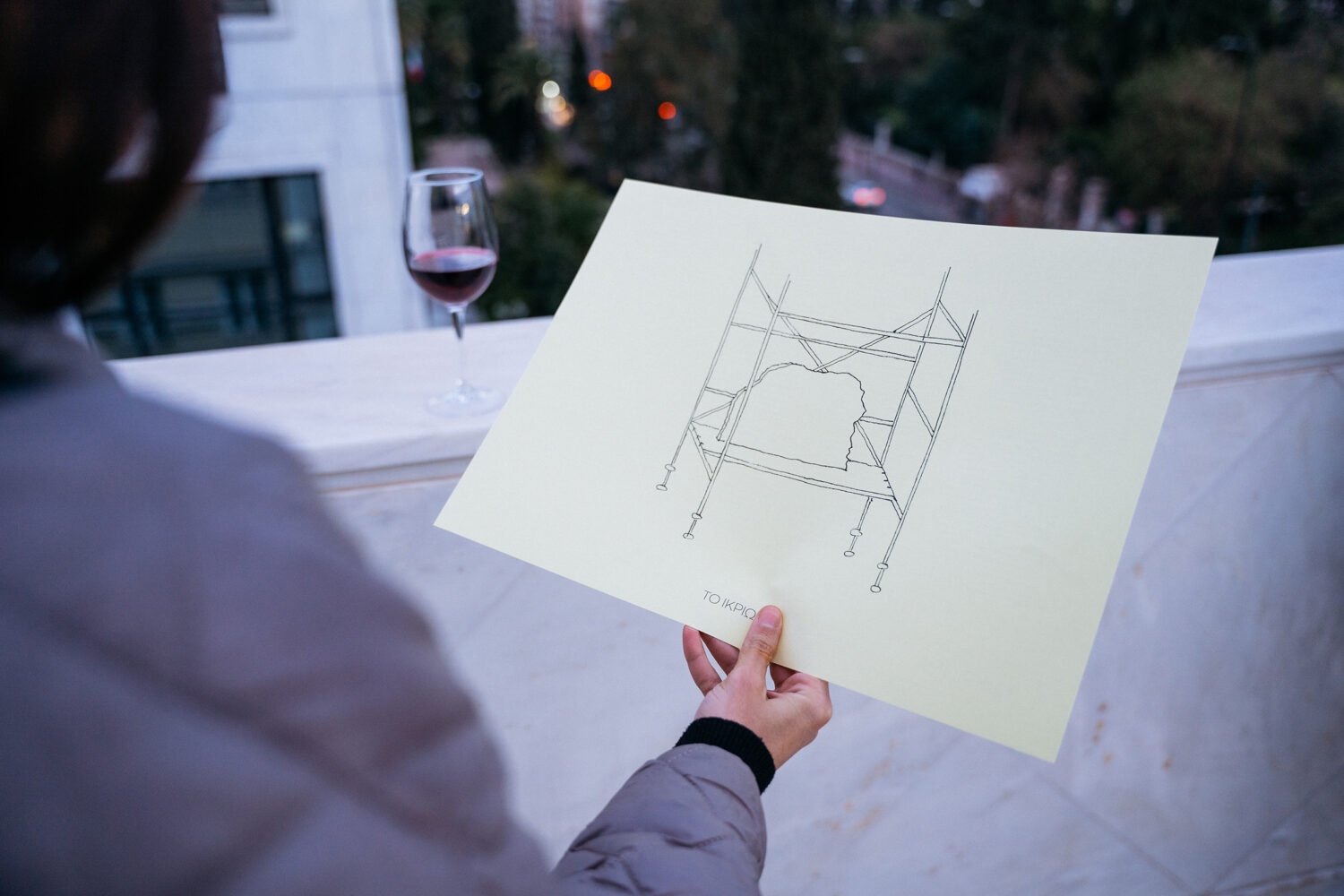
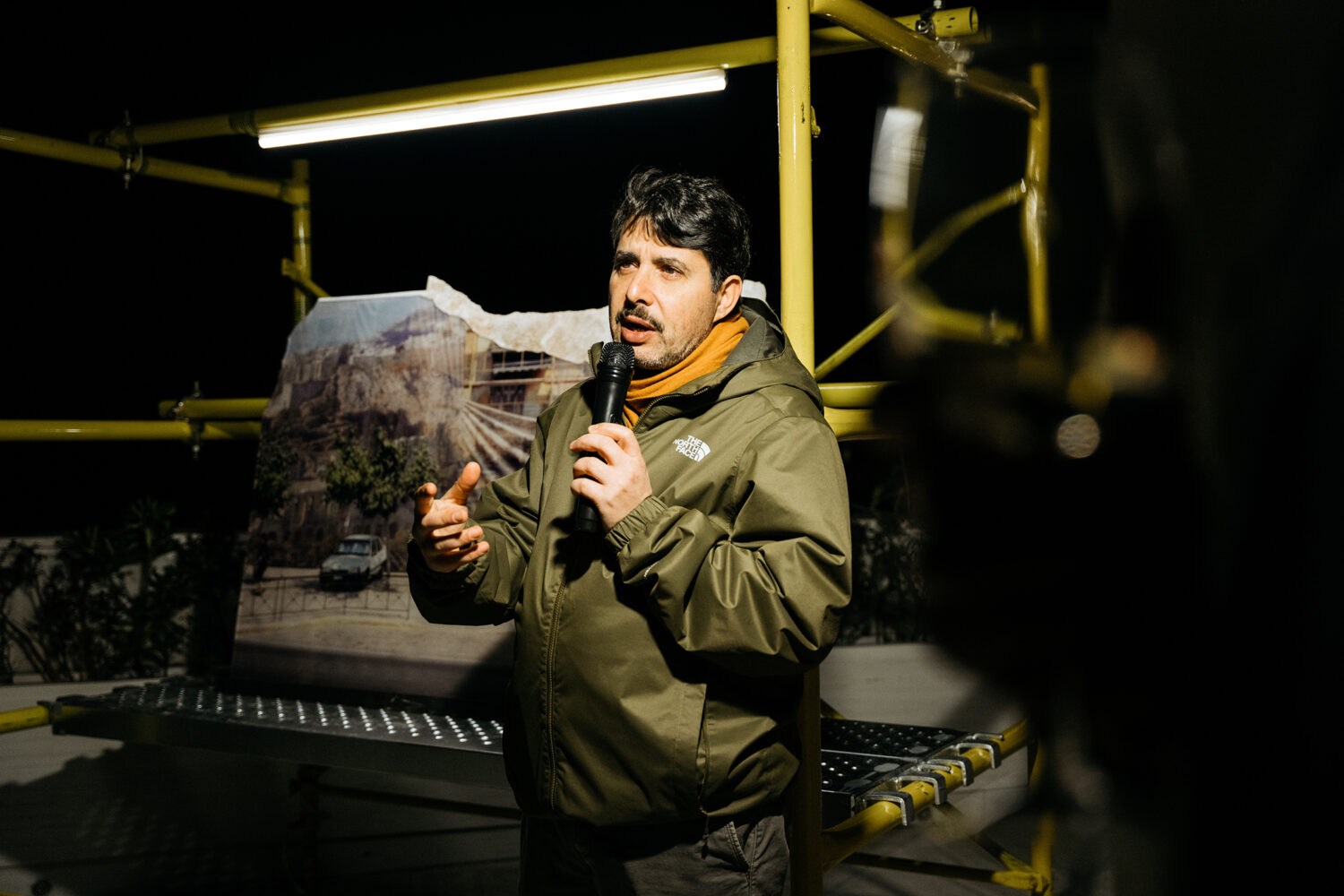
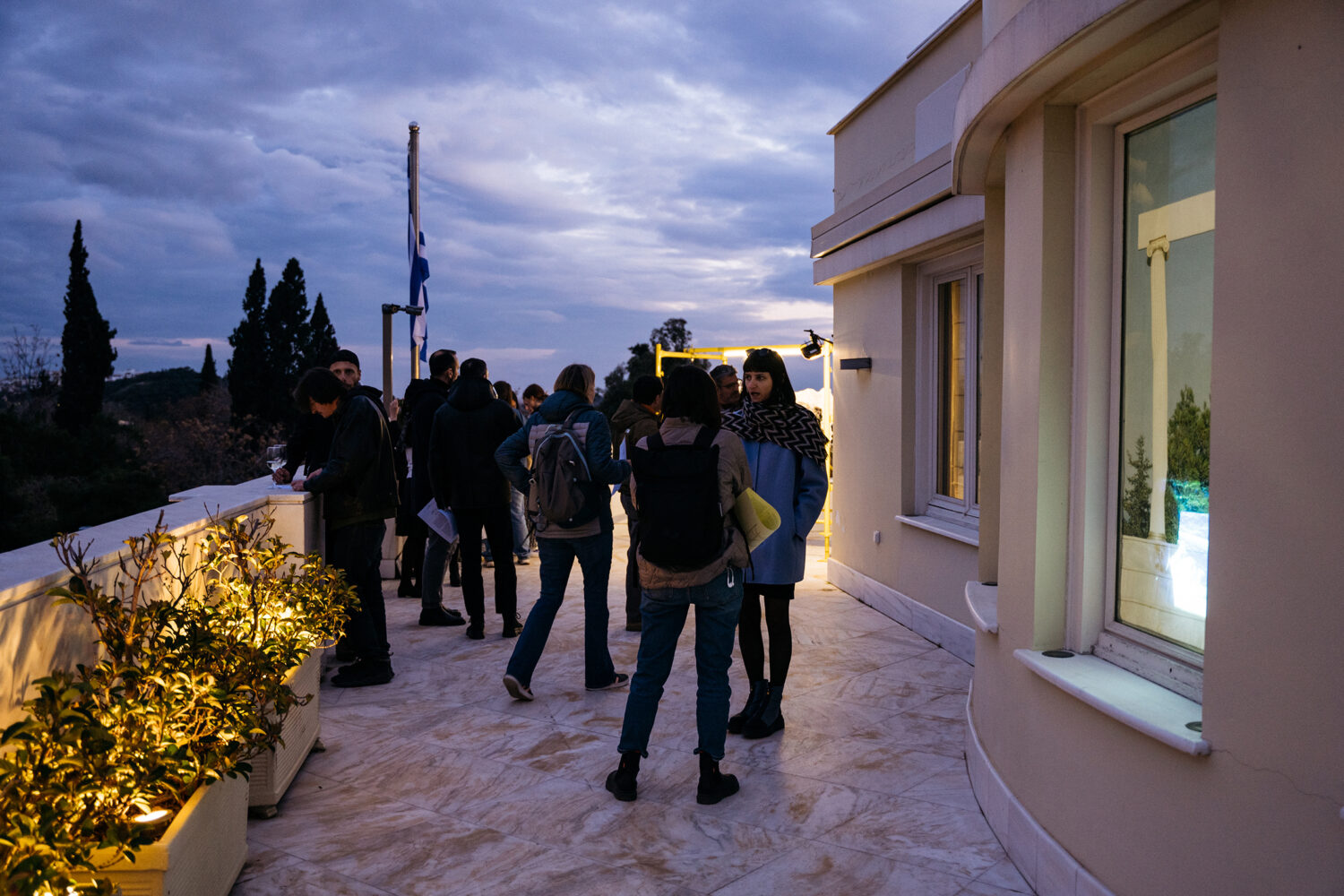



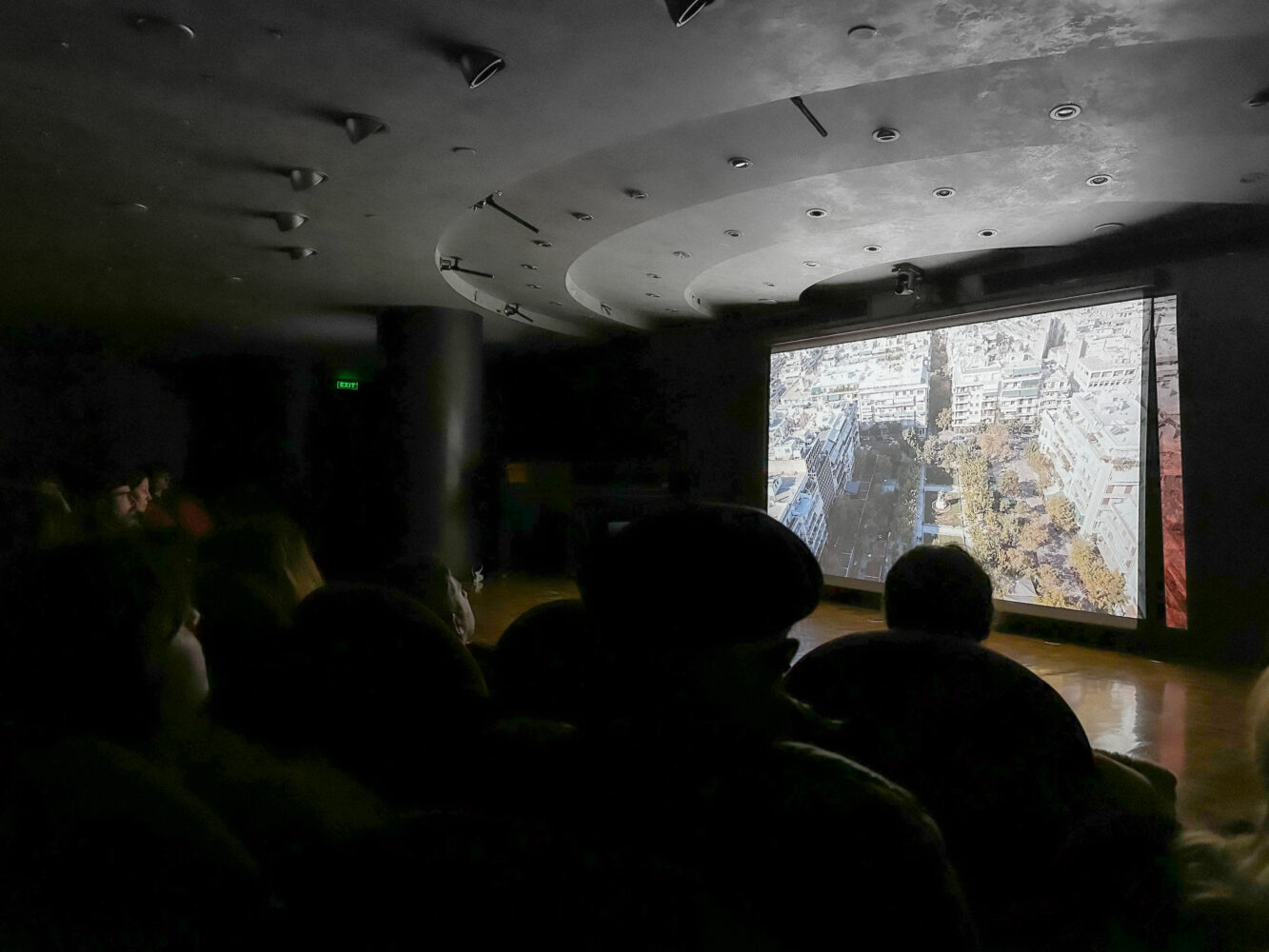


Finishing note:
Scaffolding” fragility and re-negotiation
During the inception of this project, it became paramount for us to adhere to the site-specific premises of the commission we had received from the Foundation, and to employ the artist-made monument as a living organism around which encounters, debates, and all sorts of situations could take place. Sweeper, the scaffolding monument, embodied the locus where the negotiation of memory unfolded, where different temporalities and spatialities converged. This happened quite literally through its dialogue with the slopes of Mount Hymettus and the surrounding urban landscape—the Parthenon and the Greek Parliament among them—sites which, in contemporary Greek history, are invested with the national myth but also with profound ambivalences and divisions.
Yet what marked the project most was an unexpected twist beyond our control—one of those incidents that, in curating, seem to re-enact or even embody the narrative of the work itself. Just two weeks after the opening, despite being firmly secured, the monument collapsed in the wind and shattered into a hundred pieces. The weight of this event, compounded by its emotional resonance, carried within it a multitude of memories to be negotiated: the artist’s past, the collective past, and also the timelines of the attendees running in parallel with my own– about to be irrevocably shattered in the upcoming months.
As mentioned earlier, the chronology leaflet-object was meant to foster a tangible crossing of subjective temporalities with official narratives. But the accident fractured the installation in a wholly different way—as if a wound had reopened, or perhaps a wound never previously inflicted, one that spoke unconsciously and prophetically, as an omen of what still lies unresolved and must be rethought, renegotiated, confronted anew. Like an ancient vessel breaking open, it released memory—insistent, unquiet—demanding to be revisited, because it had not been sufficiently spoken, nor sufficiently shared. It emerged as an omen of unresolved intergenerational conflicts, the lingering heritage of colonialism, and the antagonisms and spreading disasters in Lebanon, Palestine, and beyond.
After the initial shock, and within ten days, a new piece rose on the scaffolding: a marble slab, natural like the first, but this time more robust, more assertively masculine in form. Its altered shape revealed different parts of the image—a curious tandem of absence and renewal. This unexpected event, and the act of writing about it, became inseparable from the project itself. Now that the piece lies dormant, along with the scaffolding stored elsewhere, they both continue to reinforce the endeavour—as an organic whole that evolves through time, space, and remembering.
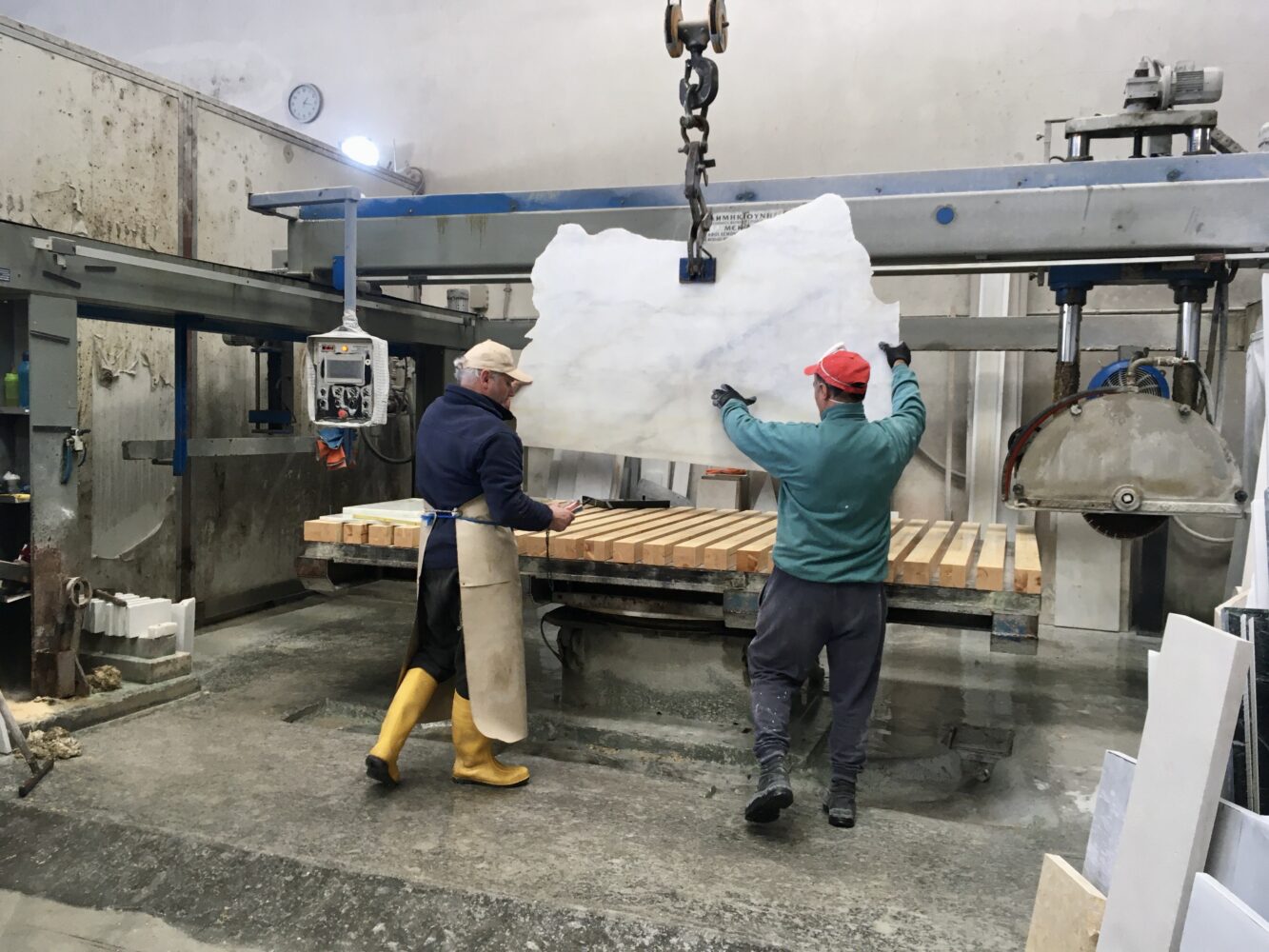
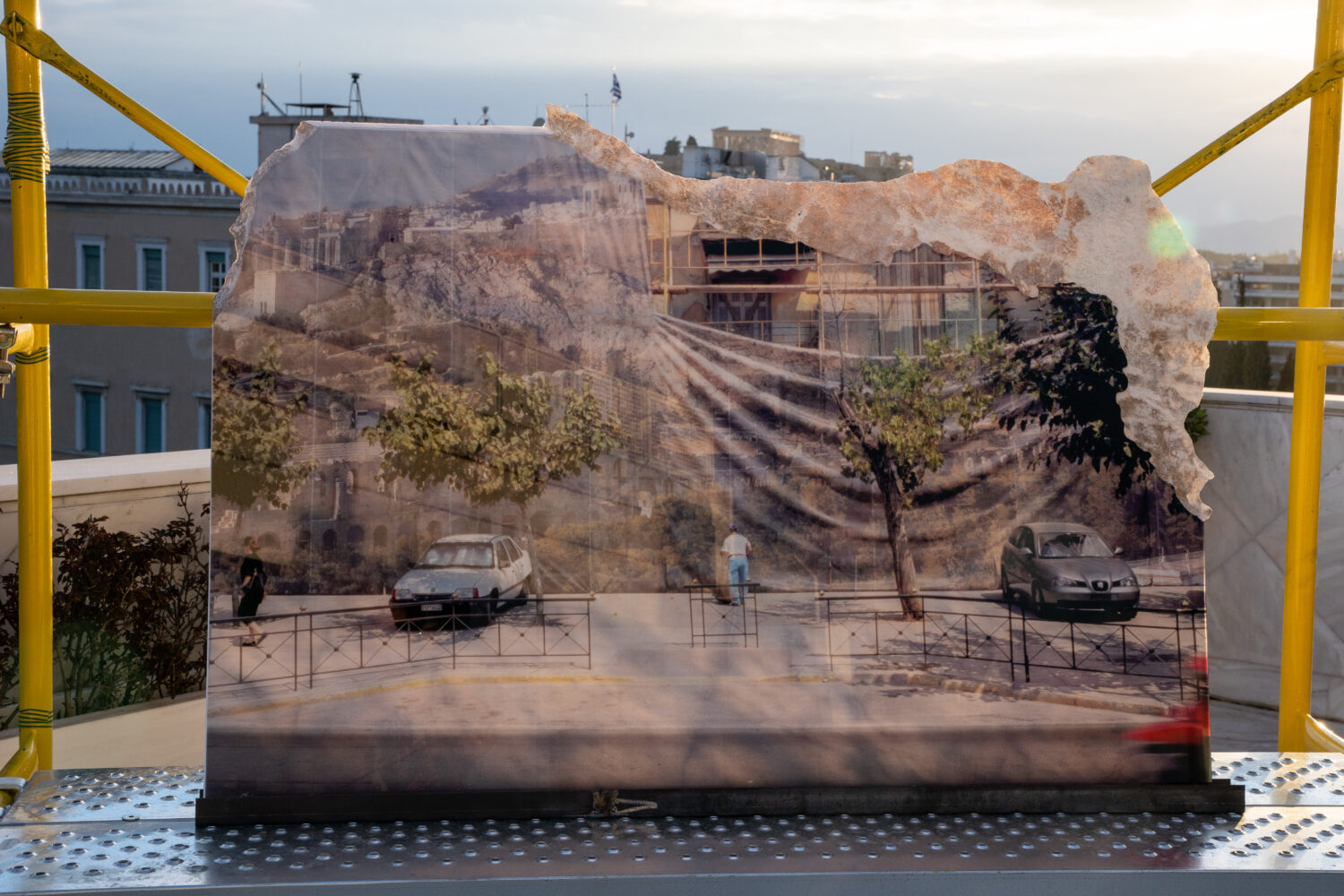
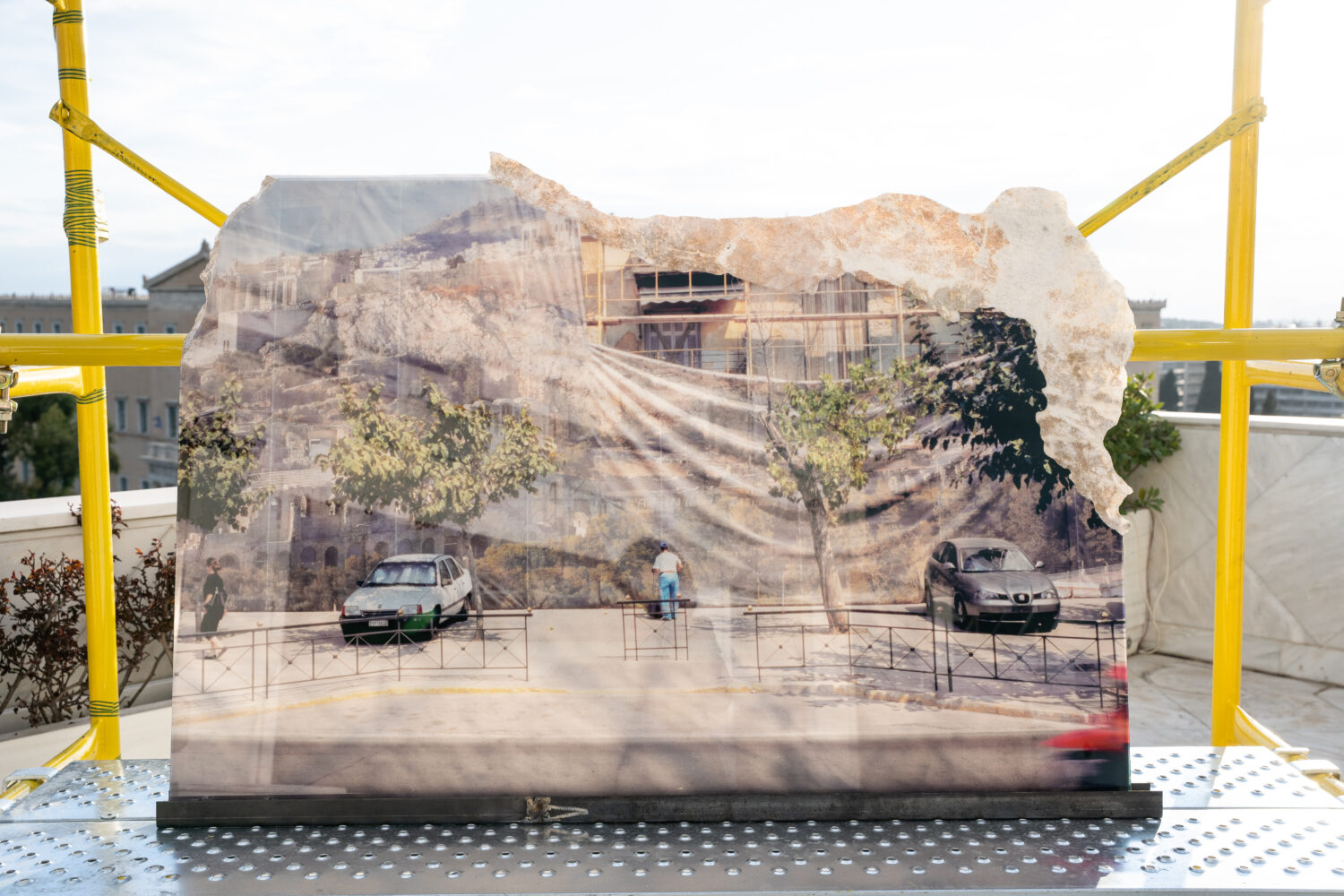
The artist and the curator would like to express their gratitude to the production contributors of Scaffolding: Nikolis Marmara Ltd (Yorgos Roumeliotis); Kaloupoemporiki Techniki Karava S.A. (Eirini Karava); Plexi Market; Macart Graphic (Michalis Varouxis); Chris Doulgeris; Stefania Orfanidou; Ioanna Nissiriou; Alexandra Saliba; Stefan Lorenzutti, and nd to the direction and the production team of Theocharakis Foundation.